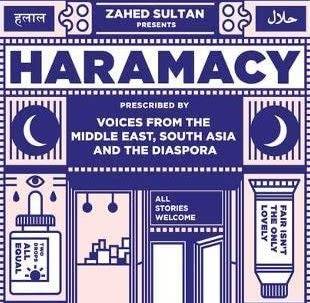
This article is a preview from the Autumn 2019 edition of New Humanist
The emotional resonance of old snapshots is hard to beat. They pack a Proustian punch, adding texture to memories that fade over the decades; not just of that joke Grandpa used to tell at Christmas, but of the pattern on his thick knitted pullover; or such-and-such a friend whom we lost contact with, but who, in the moment, was a key part of the holiday party. Trapped on little slips of 4x6 photographic paper, they even begin to become the memories themselves. We can remember that beach we sat on, but nothing of the week before or after.
What’s almost as powerful is how restricted those resonances are to our own experience. We can well up with tears at an old, curling photo of a family picnic three decades ago, but there’s little more unbearable than being forced to look through the photo albums of others – even if compulsively flicking through an acquaintance’s Facebook album has become a very modern form of procrastination. To capture a social life and have it resonate with complete strangers, decades into the future, takes a unique skill; an eye for the universal, for fragments of tenderness and euphoria. It also helps, if you’re that sort of photographer, to have interesting friends.
Nan Goldin has all of these things. Her photographs of her varied social scenes in New York in the 1970s and 80s have become iconic representations of the time, and with good reason. It’s not just that many of them were famous or infamous in their own right – musicians, artists and filmmakers like Richard Hell, Cookie Mueller and John Waters, or even Keith Haring and Andy Warhol. She also managed to capture the strange combination of excitement and risk alongside the poverty and drug addiction of downtown Manhattan. Goldin did so with a sleight of hand that gave the images emotional potency, while conferring on the subjects a respect and dignity that most contemporary representations of the scene denied them.
Some of the most powerful of these images are collected together in her film The Ballad of Sexual Dependency, currently on show in a special exhibition at the Tate Modern. Featuring almost 700 images taken by Goldin over the preceding decade, the work was first shown in the mid-1980s in the form of a slideshow, accompanied by a soundtrack of songs whose lyrics relate literally to the images on display. Goldin organised the slideshow around a selection of basic themes: kisses, for example, or nude portraits of women, or drug use (particularly heroin), domestic violence and sex. Most but not all of the photographs feature people. They are captured in moments of high excess now long extinguished, and sit on the screen in the darkened room where we, the audience, gaze back, nostalgic for a moment most of us never experienced. Then they’re gone, and another image on the same theme appears. We drink it in.
Goldin’s magic touch is the same thing that distinguishes her from so many other photographers who aim to document a moment or a scene. Sitting in the dark with the other audience members, I thought back to the traditional image of the social photographer as a silent observer, moving through a city recording the action around them almost unnoticed. It was based on the ease with which the photographer could capture a scene; a quick snapshot that left the subjects undisturbed, maybe even oblivious, before they snuck back to their darkroom or newspaper offices.
Goldin, on the contrary, did no such thing. Her photos are so lucid because she rejected the division between observer and participant. These were her friends and this was her life, and as a result they betray an unusual depth and intimacy, capturing moments that an outsider would be unlikely to get access to. Goldin’s own biography is well documented, including her drug use, sex life and her experience with grief and trauma following her sister’s suicide as a teenager. Goldin is frequently the subject of her own lens in the Ballad; living in an abusive relationship, she documented her injuries resulting from her boyfriend’s violence. But those photos hold no superior placement over the injuries and excesses of others; each get their moment, whether joyous or painful. She is one of her own friends.
In part, Goldin’s access relied on the fact that her art was produced not just from but for her community, emerging from the punk DIY ethos of the cultural scene at the time. The Ballad of Sexual Dependency was originally screened as a slideshow for her friends and associates, in a double-bill with a film by John Waters, the “Prince of Puke” director whose homemade films starring his friends (including Cookie Mueller) were to make him a cult icon.
A poster for the original screening accompanies the film in the Tate exhibition. The title itself was drawn from The Threepenny Opera, Bertolt Brecht’s musical about Victorian London’s demi-monde, written at the height of Weimar Germany’s own subversive cultural boom. Like Weimar culture 1980s New York has become a byword for a certain type of sleazy cool, and that’s where the unsettling dynamic emerges in watching the Ballad today. It is all too easy to consume as glamour, if you don’t have your critical wits about you. Goldin herself works against this tendency – at the end of the film is a dedication to those featured who have since died, and it’s long, far too long – but the tendency is there nonetheless, erasing in your mind the suffering attached to addiction, overdose and the emergent Aids crisis that haunts every photo. It’s a function of the voyeurism implicit in viewership.
Goldin hasn’t forgotten that link. Today she is a powerful moral voice in the art world, most recently since founding Prescription Addiction Intervention Now (PAIN), an advocacy group aiming to divest art institutions from their funding by the Sackler Trust. This is due to its links with Purdue Pharma, the pharmaceuticals company whose production and marketing of the painkiller OxyContin is regarded as a key driver in the US opioid crisis. Goldin herself became addicted to OxyContin in 2014 after it was prescribed to her for tendonitis. The campaign is already producing successes. The National Portrait Gallery refused a £1m donation from the Sackler Trust after Goldin threatened to pull out of a career retrospective at the gallery, and the Tate have followed suit. Deaths from drug overdoses have doubled in the last decade, and prescription and synthetic opioids are to blame for the vast majority of those cases.
What might representations of the opioid crisis look like today? The issue is simultaneously a moral, political and formal one – as it always has been. It is too easy to “blame” artists for “making addiction sexy”. Bill Clinton tried as much when he attacked “heroin chic” in fashion photography in the late 1990s, a trend which saw artists like Goldin and Larry Clark as forebears. “The glorification of heroin is not creative; it’s destructive. It’s not beautiful; it’s ugly,” he said, shifting responsibility for that particular crisis from the US government to jeans manufacturers.
But it is true that the snapshot photograph of drug addiction carries with it the baggage of urban glamour and fashion. Today opioid addiction finds its most prominent cultural representation in music. Cloud rappers such as Lil Peep and 6ix9ine, for example, regularly reference opioid use and addiction, and sometimes die from it. Yet the crisis, stemming from the overprescription of “legitimate” painkillers, hits both Midwestern and middle-class America just as strongly. According to the American Farm Bureau Federation, almost three-quarters of US farmers have been directly affected by opioid addiction. While that side is beginning to find voice in country music, with artists like Angaleena Presley and Brandy Clark releasing tracks about painkiller addictions, there remains a crisis of wider cultural representation.
It is unlikely the snapshot photograph will ever play a role in that. Thanks to new technologies, our relationship with photography has fundamentally and irreversibly changed. While photo-sharing apps like Instagram marketed themselves on their reproduction of Goldin’s snapshot aesthetic – making retro visual effects and “errors” like light bleeds and old film stocks as easy as selecting a filter – they have fundamentally altered the social context of such photography.
The idea of a photograph being a “snapshot” of a moment has passed. The cost restriction of taking photos has disappeared with camera phones, and taking and editing multiple photos has become an everyday norm. With that, people are increasingly savvy and even paranoid about their own image, aware of how quickly and malignantly a photo can spread online without their consent. This, in many ways, has democratised a form of self-representation but removed its casual nature: photos are more stylised and posed than ever. To take out a camera at a party or a bar, or during sex, means a very different thing today than it did in the late 1970s. The snapshot is dying, and with it we are losing the intimacy and tenderness of those representations, and the emotional, historical and political power they might hold.
Nan Goldin’s “The Ballad of Sexual Dependency” is at Tate Modern, London, until 27 October

